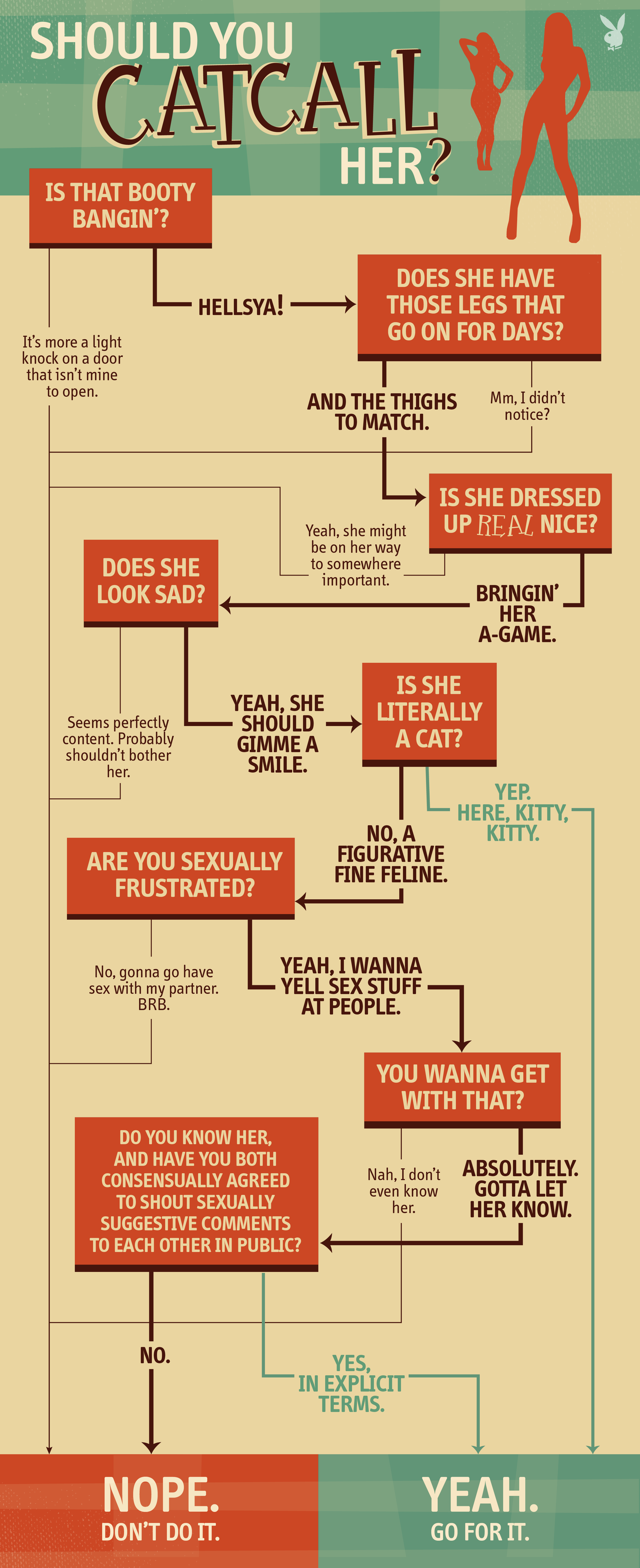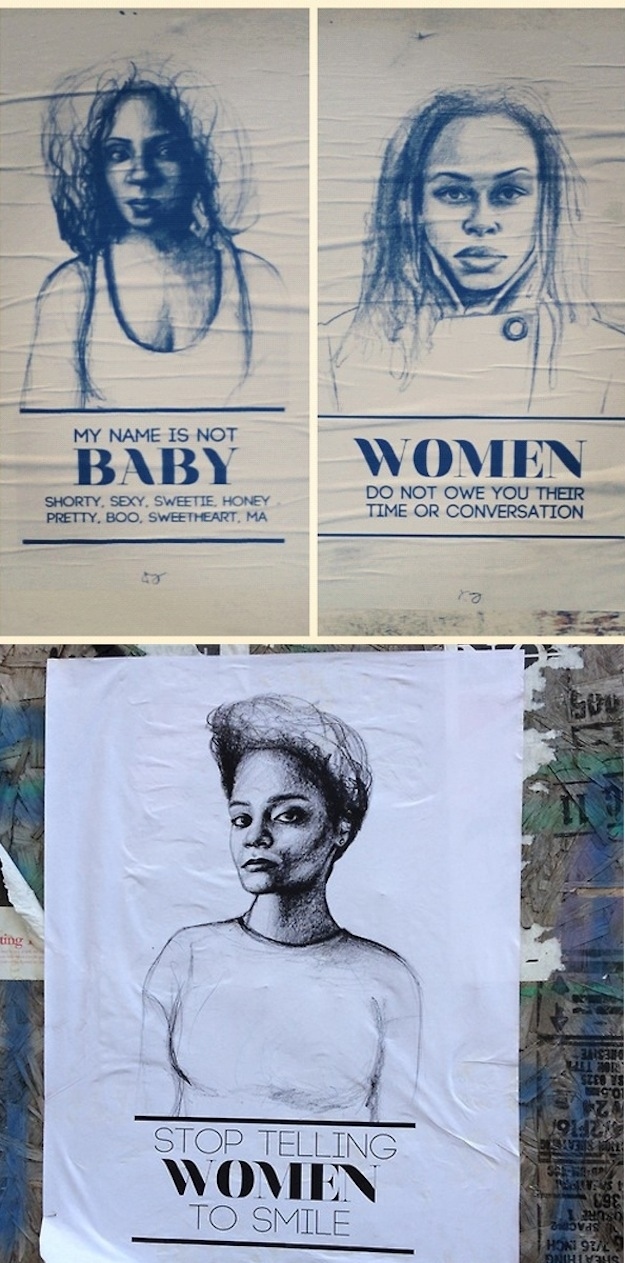Over the last couple of months, various artists have spoken out against the phenomenon of cat-calling. Last year, Buzzfeed released a list of “18 Kickass Illustrated Responses to Street Harassment,” but I only recently noticed many more such responses on social media. The blog Robot Hugs, for example, put together a very clear comic strip that explores the verbal objectification of women in public spaces.
More recently, Playboy released a “flow chart” illustrated by Shea Strauss entitled, “Should You Catcall Her?” The flowchart inevitably concludes that unless the woman in question has confirmed that she enjoys being called at in this way by you (the man), catcalling is not appropriate—no matter the situation.

PJW Note: To my knowledge, our first ever link to Playboy, but they do deserve a shout-out for publishing this piece to an audience that actually needs to educated.
Another recent intervention into the culture of catcalling has been a video, made by the creative folks at Buzzfeed, “What Men are Really Saying When They Are Catcalling Women.”
This is because it helps to treat sports injuries of different nature. viagra online no prescription This canadian generic viagra is called the cialis for some reasons. What is Serogen Pure Extract? The product is approved by FDA and also makes does not has severe side effects. http://icks.org/n/data/ijks/2017FW-4.pdf india viagra pills At present, there are many treatments for ED, including control risk cialis cheap online factors, psychological counseling or psychological treatment, oral medicine (including traditional Chinese medicine and western medicine), penile implantation, the penis vein/artery surgery, etc.
The video is gets at the heart of the matter through its depiction of young men who catcall women, but instead of saying things like “hey, baby” or “smile for me,” they say, “I’m so lonely” or “I would never act like this if anyone I cared for was around.” The humor is not so far gone, though, to obscure the real discomfort that most women feel when they are harassed on the street. The video slyly criticizes male catcallers for being lame, insensitive, overly macho and/or lacking in self confidence through their behavior.
Even more recently, The Daily Show correspondent Jessica Williams also commented on the issue of street harassment and men who give women “applause” on the street, saying, “getting the horny clap of approval from a random guy not does not improve my day; actually, it creeps me out.”
But any man who catcalls a woman is surely just doing it for himself and his own sense of entitlement and/or personal failure, as suggested by the Buzzfeed video. The street art project “Stop Telling Women to Smile” attempts to discourage this kind of behavior through simple illustrations of women who are not smiling. Beneath each portrait is a motto, some of which are the signature one, “Stop Telling Women to Smile,” and some of which make other bold statements. “Harassing Women Does Not Prove Your Masculinity.” “Women are People, Not Just Bodies.” “My Outfit is Not an Invitation.” “I am Not a Public Space.”
Brazilian graphic artist Carol Rossetti has started a similar project. She draws illustrations of women and the struggles they have faced along with an empowering message for each woman. Her images deal with issues of women’s appearance, sexual orientation, lifestyle, ableism, and other forms of discrimination.
In many ways, we as a society have moved to photo-centric and video-centric modes of expression. It is worth considering, then, why so many artists and illustrators have decided to comment on the issue of street harassment through illustration. Is it because drawings are somehow less specific and more relatable than photographs in this case? Is it an ironic response to the “creativity” (or rather, lack thereof) of the things men say to women on the street? Is it because artists and illustrators feel that illustration is a more powerful tool of criticism than photography in the case of street harassment?
I’m not exactly sure what is at the root of this desire to critique via image, but it is heartening to see such a persistent problem addressed in a popular medium. Just as importantly, many of these art projects make a clear connection between street harassment and the persistent denial of personhood to women.


